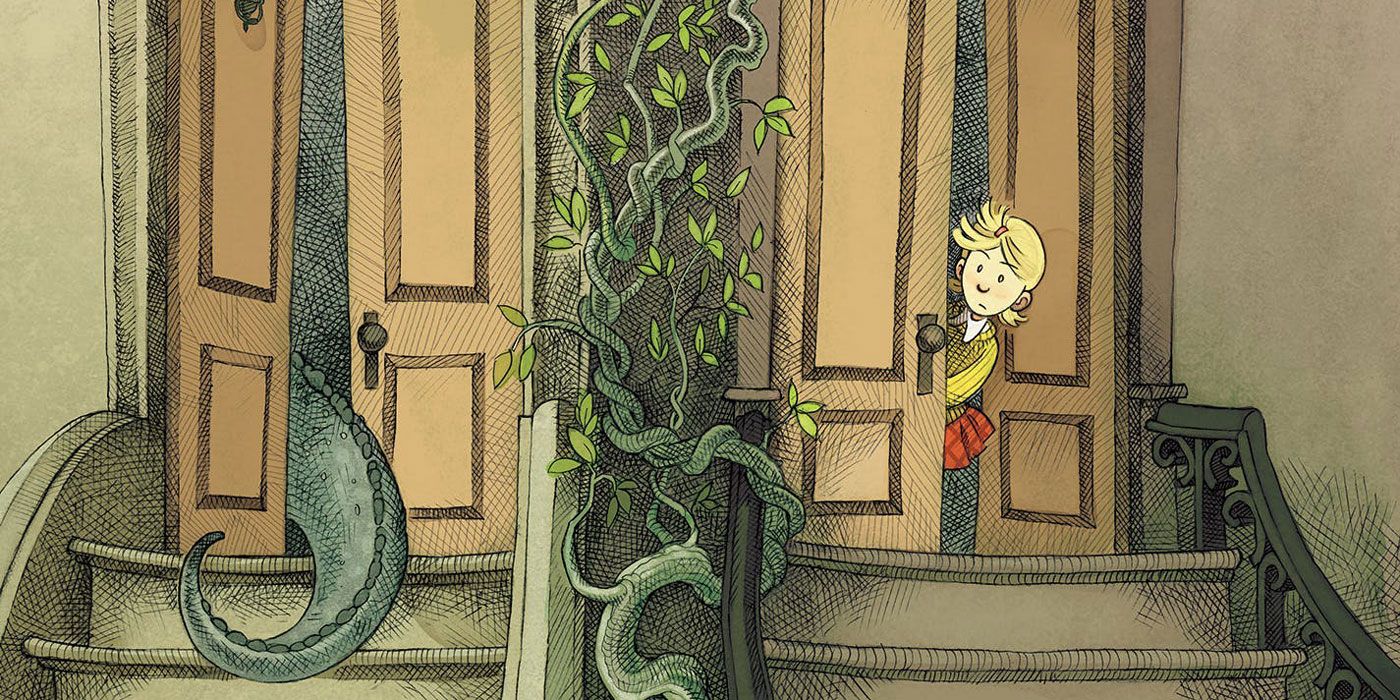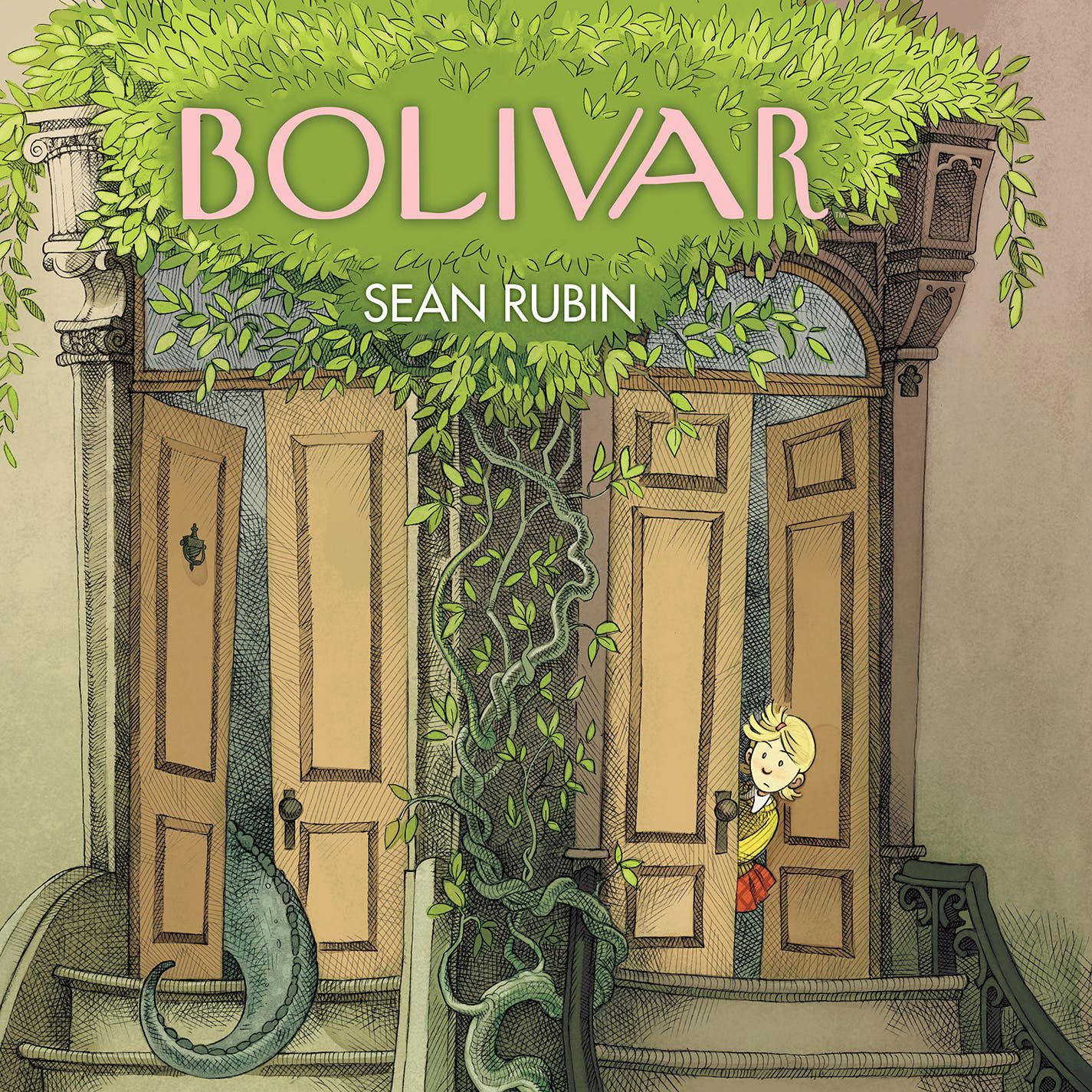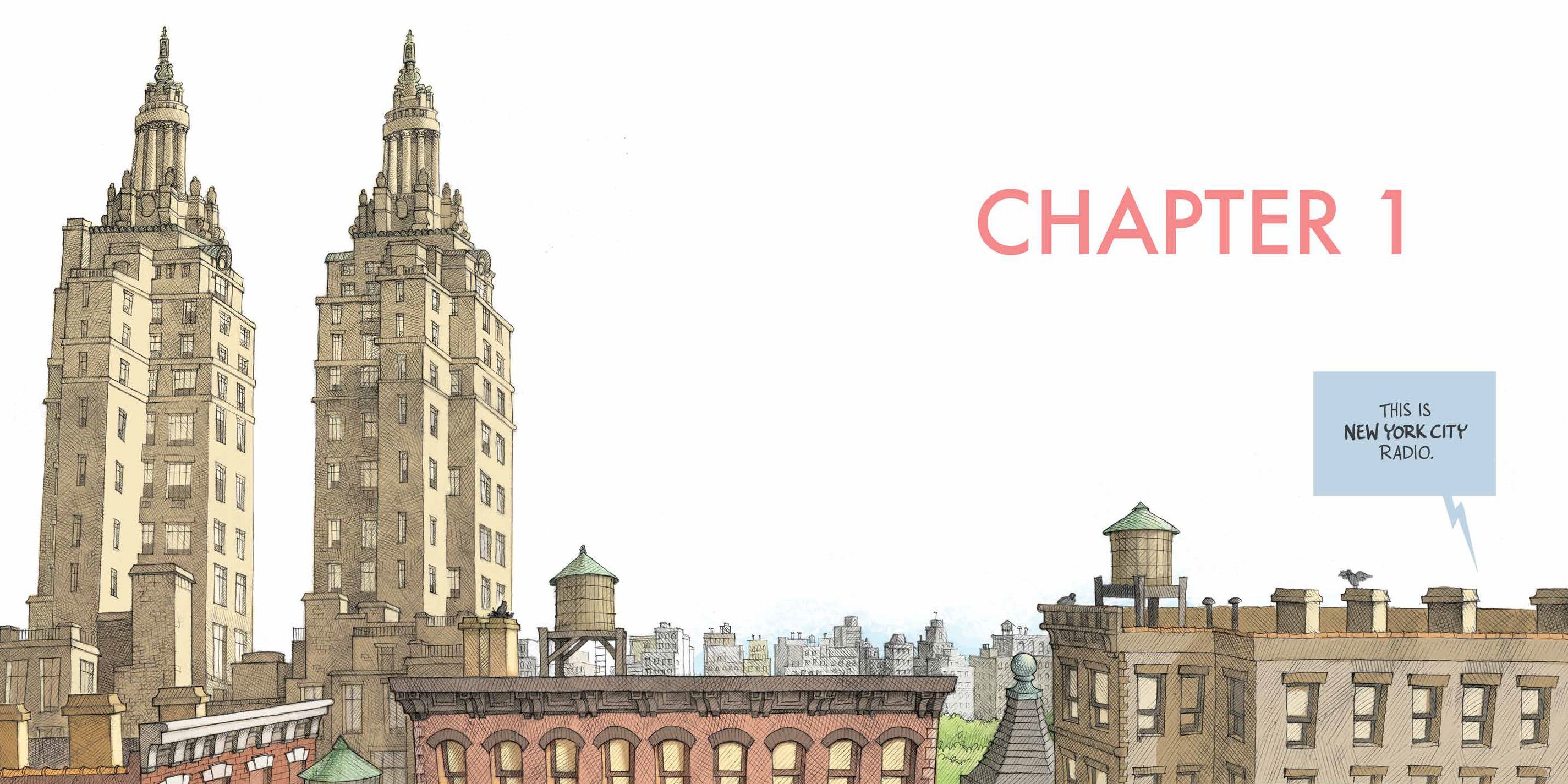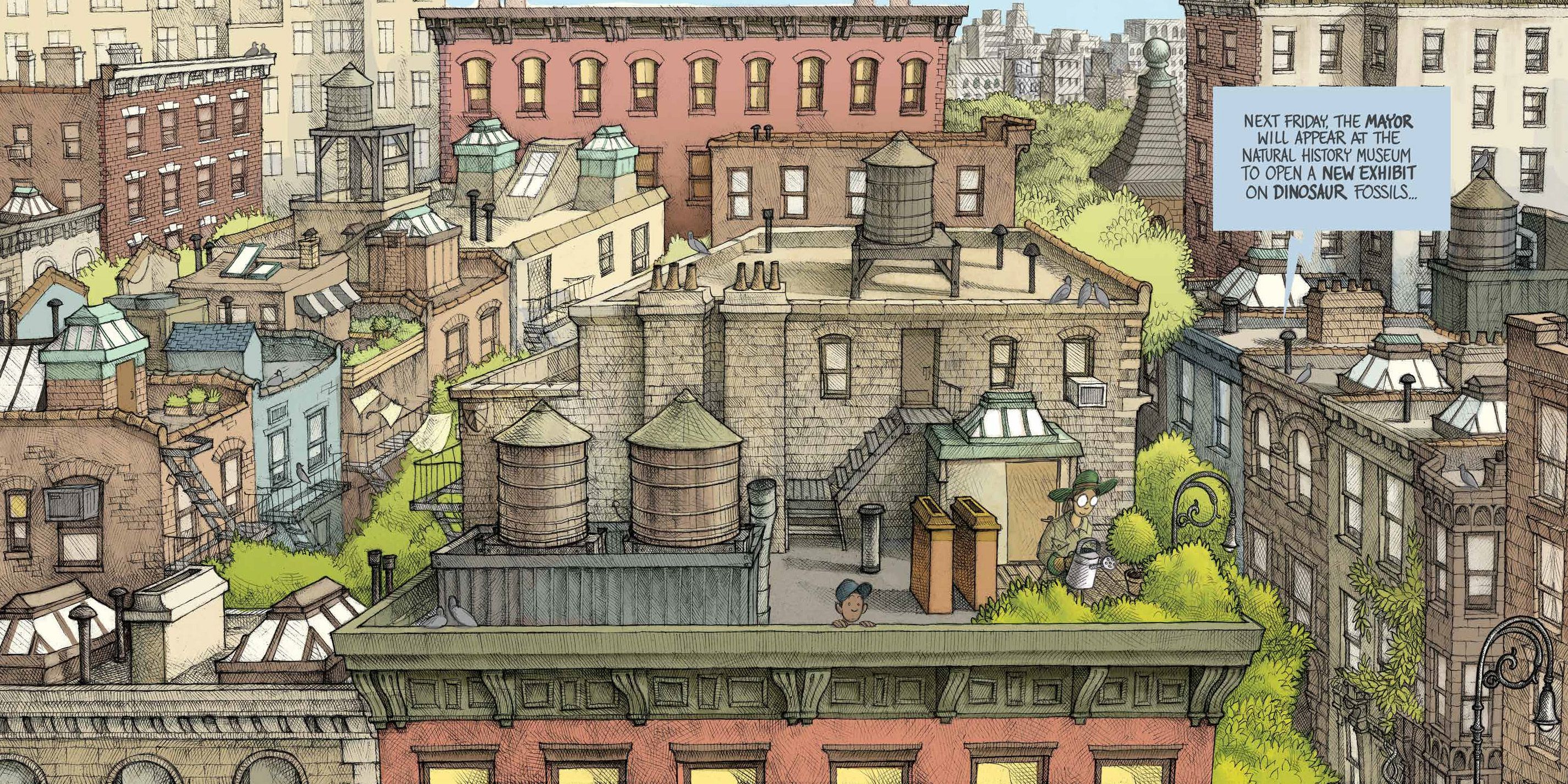Sybil has a very unusual neighbor, but in the bustling Upper West Side of New York City where she lives, nobody else seems to have noticed. He’s a dinosaur named Bolivar. Everyone knows dinosaurs are extinct, and what’s so unusual about a neighbor who visits the newsstand daily and stops in a coffee shop? Or even one who really likes corned beef?
Sybil’s out to convince her mother (and everyone else) that Bolivar is what she says he is, but somehow, nobody will believe her. Nobody even notices anything unusual when Bolivar is mistaken for the mayor and gives a televised press conference. What will it take to expose Bolivar? And if he is ever revealed, what will be the repercussions for this very quiet neighbor who keeps to himself?
RELATED: Dodgeball is Life in BOOM! Studios’ Dodge City
Bolivar and Sybil’s story unfolds in Bolivar, a remarkable 244-page hardcover hybrid graphic novel/picture book from author Sean Rubin (Mouse Guard: Legends of the Guard) and BOOM! Studios/Archaia. After years in development -- including the book being optioned by Warner Bros. as an animated film back in 2012 -- CBR and Rubin discussed the project’s origins, its detailed New York City neighborhoods and being taken seriously.
CBR: Bolivar, in both its humor and its drama, takes its major theme from many a piece of classic children’s literature -- Sybil’s frustration that no adults will take her seriously. How well do you remember that frustration?
Sean Rubin: I actually relate to Sybil much more as an adult! Part of Sybil’s frustration was inspired by my own difficulties in establishing a creative career early on. I think the desire to have your ideas taken seriously by those around you is something people of all ages can relate to.
Obviously kids love dinosaurs, but was there any particular inspiration for Bolivar, particularly his urban anonymity?
Bolivar is based on an HG Toys dinosaur figure I got when I was pretty young. It was one of those comically inaccurate toy dinosaurs that still existed in the late 1980s, based on a T-Rex in the Rudolph Zallinger painting “Age of Reptiles.” It came with a caveman, had three-fingered claws, and a pot-belly, and it dragged its tail. I loved it. My cousin, the photographer Edward Addeo, decided to name him Bolivar.
Uncle Eddie liked to send Bolivar on crazy adventures, so one day, for some reason, he became mayor of New York City. I tried to write a quick, funny children’s book about that idea, but the second I put a dinosaur in New York City, I realized that no one would actually notice him -- at least not for a while. The whole book really came out of that discovery.
So much of the book -- the level of authenticity put into the neighborhoods, the sense of solitude in a crowd -- is so specific to New York that it reads almost as much a love letter to the city as anything else. Were you aware of that as you worked on it? Or was New York simply the background and the details added along the way fleshed out the city more than even you anticipated?
As a native New Yorker, I certainly love the city. I’ve also become more aware of how much the book shows that now that more people are reading it. Early readers, mostly friends, had pointed out that New York was a sort of additional character in the story, and I decided it was important to create a realistic depiction of the city in order for readers to accept the completely unrealistic notion that there was a dinosaur walking around in it.
The locations in Bolivar are also places that I like to go, so I especially enjoyed recreating them in the illustrations. I used to live on the Upper West Side, and I’ve spent a lot of time at the Metropolitan Museum of Art, Central Park, and, of course, in grocery stores, and I love to visit these places whenever I come back.
You note in the book’s afterword that Bolivar took several years to complete. How long did you work on it? How often were you able to make it your primary focus?
I’ve avoided counting the actual months, but I think the book was “due” for around five-and-a-half years. A chunk of that time was spent fine-tuning the format, which is to say, working on the first chapter. In that period, I also moved four times, got married, and had two kids, so there were definitely a number of distractions and detours. The final two years of the project, which occurred after I got married, were the most busy and productive, including adding a fifth chapter. Suffice it to say, my wife really wanted me to finish it.
After your work on Mouse Guard, was Archaia the obvious choice to bring Bolivar to audiences?
Yes, absolutely. At the time, I was also attracted to Archaia because I knew Stephen Christy was an extremely creative editor and I thought that, if they had published Return of the Dapper Men and Jim Henson’s Tale of Sand, they were a good fit for something as unusual as Bolivar.
Bolivar is being developed as an animated feature. Any news on that front that you’d care to share?
It’s definitely in development. We like to say, just like Bolivar, the movie isn’t extinct yet.
What’s next for you?
I’m very excited to be illustrating a picture book written by another author, due out in 2019. I can’t say too much yet, but it looks like we’re headed to the moon.
Bolivar is in stores now.




